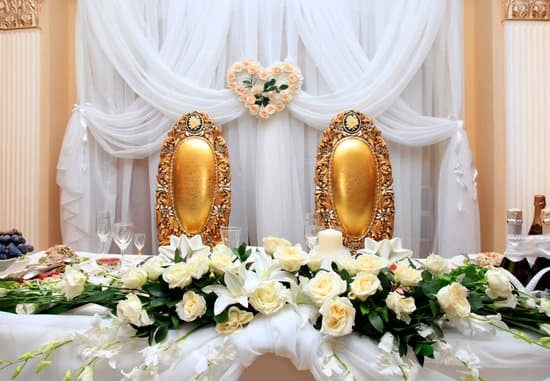How much is it to get a wedding dress altered? The cost of altering a wedding dress can vary depending on several factors, including the type of alterations needed and the expertise of the seamstress or tailor. Understanding the importance of wedding dress alterations is crucial in ensuring that the dress fits perfectly and complements your overall look on your big day.
Wedding dress alterations are essential for achieving the perfect fit, as most off-the-rack dresses are designed to standard sizes and may not suit every body shape. Whether it’s adjusting the hemline, taking in or letting out the waist, or altering the neckline, these modifications can make a significant difference in how the dress looks and feels on you.
Factors such as fabric, complexity of alterations, location, and experience of the seamstress or tailor can all impact the cost of wedding dress alterations. In this article, we will explore these factors in more detail, provide average costs for various types of alterations, offer tips for finding an affordable and reputable professional for your alterations, and share real-life experiences with wedding dress alteration costs.
So if you’re wondering how much it will cost to get your wedding dress altered, keep reading to find out more.
Factors That Can Affect the Cost of Wedding Dress Alterations
Wedding dress alterations are an essential part of the wedding planning process, as they ensure that the bride’s gown fits perfectly on her special day. However, the cost of these alterations can vary depending on a variety of factors.
One of the main factors that can affect the cost of wedding dress alterations is the complexity of the alterations needed. More intricate alterations, such as reworking the bodice or adding embellishments, will typically cost more than simple adjustments like hemming.
Another factor to consider is the fabric of the wedding dress. Some fabrics, such as lace or silk, require more delicate handling and expertise, which can impact the overall cost of alterations. Additionally, larger wedding dresses with extensive beadwork or layers may also incur higher alteration fees due to the extra time and expertise required.
The location and reputation of the seamstress or tailor can also affect the cost of wedding dress alterations. In metropolitan areas or upscale bridal salons, prices may be higher compared to smaller towns or independent seamstresses. The level of experience and skill of the professional performing the alterations will also play a role in determining costs.
| Type of Alteration | Average Cost |
|---|---|
| Hemming | $100-$150 |
| Bodice Adjustments | $200-$400 |
| Adding/Removing Sleeves | $150-$300 |
| Bustle Addition | $50-$100 |
Average Cost of Wedding Dress Alterations Based on Different Types of Alterations
When it comes to getting a wedding dress altered, the cost can vary depending on the type of alterations needed. It’s important to understand the average cost of different types of wedding dress alterations so that you can budget accordingly. Here are some common types of wedding dress alterations and their average costs:
Hemming
Hemming is one of the most common wedding dress alterations, and it typically involves shortening the length of the dress. The average cost for hemming a wedding dress ranges from $100 to $300, depending on factors such as the fabric, number of layers, and complexity of the hem.
Taking in or Letting Out
If your weight fluctuates or if you purchase a sample gown that doesn’t quite fit, you may need to have the dress taken in or let out. This alteration can range from $50 to $200, depending on the complexity and number of seams that need to be adjusted.
Adding or Removing Sleeves
For brides who want to add sleeves to a strapless gown or remove sleeves from a long-sleeved dress, the cost can vary widely. On average, adding or removing sleeves can range from $100 to $400, depending on the fabric and intricacy of the design.
Understanding these average costs for different types of wedding dress alterations will help you budget accordingly and avoid any surprises when it comes time to pay for your alterations.
It’s essential to keep in mind that these are just average costs, and prices can vary based on factors such as your location, the expertise of the seamstress or tailor, and any additional embellishments or details on your gown that may impact the complexity of the alterations needed.
How to Find a Reputable and Affordable Seamstress or Tailor for Wedding Dress Alterations
When it comes to finding a reputable and affordable seamstress or tailor for wedding dress alterations, there are several factors to consider in order to ensure that you get the best quality work at a price that fits within your budget. Here are some tips for finding the right professional for your wedding dress alterations:
1. Ask for recommendations: Reach out to friends, family members, or even your bridal shop for recommendations on seamstresses or tailors who specialize in wedding dress alterations. Getting referrals from people you trust can help you find someone with a proven track record of quality work.
2. Research online reviews: Use online resources such as Google Reviews, Yelp, or social media platforms to read reviews and testimonials from past clients of local seamstresses and tailors. Pay attention to comments about pricing, level of service, and overall satisfaction with the alterations.
3. Schedule consultations: Once you have a shortlist of potential seamstresses or tailors, schedule consultations with each of them to discuss your specific alteration needs and to get a sense of their pricing structure. During these consultations, inquire about their experience with wedding dress alterations and ask to see examples of their previous work.
Finding the right seamstress or tailor for your wedding dress alterations is an important step in ensuring that you achieve the perfect fit for your gown without breaking the bank. By taking the time to research and compare options, you can feel confident that you’ve chosen a professional who will deliver high-quality alterations at a fair price.
Real-Life Examples of Wedding Dress Alteration Costs and Experiences
As couples prepare for their special day, one question that often arises is “how much is it to get a wedding dress altered?” The cost of altering a wedding dress can vary widely depending on several factors including the type of alterations needed, the complexity of the design, and the region where the services are being provided.
In general, brides should budget anywhere from $100 to $500 for wedding dress alterations. To give you a better idea of what to expect in terms of cost:
– Simple hemming: This type of alteration usually costs between $100 and $150.
– Taking in or letting out seams: Expect to pay around $150-$200 for this type of alteration.
– Adding bustles: Adding bustles can range from $75-$250 depending on the number and complexity needed.
– Beading or lacework: Any detailed beading or lacework may increase costs significantly due to the delicate nature of these materials.
It’s important to keep in mind that these are just average estimates based on national data; actual costs may vary by location and individual circumstances. When factoring in altercations into your budget, remember that it’s worth investing in skilled professionals who specialize in working with delicate fabrics often found on bridal gowns.
For more complex modifications such as significant redesigns or customizations, expect prices well above these averages. Ultimately though it all comes down finding someone who can adapt any detail perfectly so every bride feels amazing on her big day.
Tips for Saving Money on Wedding Dress Alterations Without Compromising Quality
When it comes to getting your wedding dress altered, finding ways to save money without sacrificing the quality of the alterations is key. Here are some tips for saving money on wedding dress alterations:
1. Get quotes from multiple seamstresses or tailors: Before committing to a seamstress or tailor for your wedding dress alterations, be sure to get quotes from several different professionals. This will give you an idea of the average cost and help you find the best price for the quality of work.
2. Only alter what is necessary: When considering alterations for your wedding dress, only make changes that are absolutely necessary. Avoid unnecessary modifications that can drive up the cost, such as completely changing the neckline or adding extensive embellishments.
3. Consider purchasing a sample or pre-owned dress: If you’re open to it, consider purchasing a sample or pre-owned wedding dress that may already fit closer to your size. This can significantly reduce the need for extensive alterations, ultimately saving you money in the long run.
By following these tips, you can navigate the process of wedding dress alterations with cost-saving strategies in mind while still ensuring that your dress fits perfectly on your special day. With careful planning and consideration, you can achieve both affordable alterations and top-quality results.
The Importance of Scheduling Alterations Well in Advance of the Wedding Date
When it comes to getting a wedding dress altered, one of the most important factors to consider is the timing. Scheduling alterations well in advance of the wedding date is crucial in ensuring that the dress fits perfectly and that any necessary adjustments can be made with plenty of time to spare.
This section will discuss why it is important to schedule alterations early and provide some tips on how to effectively plan for this essential part of preparing for your big day.
Why Early Scheduling Is Crucial
Scheduling wedding dress alterations well in advance is crucial for several reasons. First and foremost, it allows enough time for the seamstress or tailor to make any necessary changes without feeling rushed. Rushing through alterations can lead to mistakes and may result in a less-than-perfect fit for your dress. By scheduling early, you also have the flexibility to make multiple fitting appointments if needed, ensuring that every detail is taken care of.
Tips for Effective Planning
To ensure that you have more than enough time for alterations, it’s recommended to purchase your dress at least 9-12 months before your wedding date. This provides ample time for any necessary ordering, shipping, and initial fittings.
As soon as your dress arrives, schedule a consultation with a reputable seamstress or tailor to discuss the alterations needed and set up a timeline for appointments leading up to the wedding day. It’s also essential to communicate openly with your seamstress or tailor about any specific timelines related to your wedding events (such as engagement photos or bridal showers) so that they can accommodate those dates when planning the alteration schedule.
By prioritizing timely scheduling for wedding dress alterations, brides can ensure that their gown fits like a dream on their special day while avoiding any unnecessary stress or last-minute rushes leading up to the wedding. This proactive approach allows for a smooth and enjoyable alteration experience, leaving you feeling confident and radiant on one of the most memorable days of your life.
Real-Life Examples of Wedding Dress Alteration Costs and Experiences
When it comes to wedding dress alterations, the cost can vary significantly depending on the specific alterations needed. For minor adjustments such as hemming, the average cost can range from $50 to $150. More complex alterations, such as taking in or letting out the dress, can range from $100 to $400. Adding embellishments or redesigning certain elements of the dress can further increase the cost.
One bride shared her experience of getting her wedding dress altered, stating that she paid $200 for hemming and taking in the bodice. Another bride noted that she spent around $300 for multiple alterations including hemming, adding sleeves, and adjusting the neckline. These real-life examples showcase how much is it to get a wedding dress altered and emphasize the importance of budgeting for alterations in addition to the cost of the dress itself.
It’s important to keep in mind that these costs can vary based on location and the expertise of the seamstress or tailor. Prices may be higher in metropolitan areas compared to smaller towns or rural areas. Additionally, highly skilled professionals may charge more for their services. Therefore, it’s essential to research and find a reputable and affordable seamstress who can provide quality alterations within your budget.
| Wedding Dress Alterations | Cost |
|---|---|
| Hemming | $50 – $150 |
| Taking In/Letting Out | $100 – $400 |
| Adding Embellishments/Redesigning | Varies |
Final Thoughts
When it comes to wedding dress alterations, the cost can vary depending on several factors. It’s important to remember that the price of alterations will depend on the type and complexity of the changes needed for your specific dress. Whether it’s a simple hem or more intricate adjustments, finding a reputable seamstress or tailor is crucial in ensuring that your wedding dress fits perfectly on your special day.
One of the most frequently asked questions by brides-to-be is, “How much is it to get a wedding dress altered?” The answer can range from as low as $100 to several hundred dollars, depending on the alterations required.
Factors such as the material of the dress, its design, and any embellishments can also impact the overall cost. Additionally, keep in mind that rushing alterations may result in additional fees, so planning ahead and scheduling appointments well in advance is essential.
In conclusion, while wedding dress alterations may add an extra expense to your bridal budget, they are absolutely necessary for achieving the perfect fit. By considering the factors that can affect alteration costs and following our tips for saving money without sacrificing quality, you can ensure that your wedding dress not only looks beautiful but also feels comfortable and tailored to your unique body shape.
As you begin your search for a skilled and affordable seamstress or tailor, be sure to schedule consultations and ask for references or examples of their past work to find someone who will help you look stunning on your big day while staying within budget.
Frequently Asked Questions
How Many Months Before Wedding Should You Get Your Dress Altered?
The ideal time to get your wedding dress altered is about 2-3 months before the big day. This allows for enough time for multiple fittings and ensures the alterations are completed in a timely manner.
Why Are Wedding Dress Alterations So Expensive?
Wedding dress alterations can be expensive due to the intricate and delicate nature of the work involved. Skilled seamstresses or tailors may need to make significant changes to the dress, which requires time and expertise, leading to a higher cost.
How Many Sizes Down for Wedding Dress Alterations?
Typically, wedding dresses can be altered down by two sizes without compromising the overall look and fit of the dress. Going more than two sizes down may require extensive alterations that could potentially alter the original design of the gown.

I have been involved in marriages for over 20 years helping couples and singles understand more about them.





